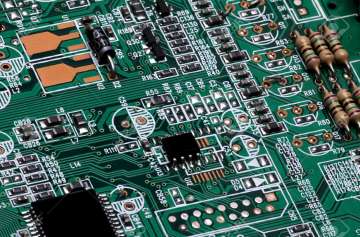Researchers have developed the first flexible electronic chip made of magnetic sensors and organic, polymer-based circuits, an advance which paves the way for the development of artificial skin.
The ultrathin integrated circuit, or microchip, is described in the journal Science, as a matrix system made up of several tiny components including magnetic sensors, and signal amplifiers on a single platform.
According to the scientists, including those from the Leibniz Institute for Solid State and Materials Research in Germany, the flexible electronic circuit has a high magnetic sensitivity.
They said it is also robust against mechanical deformation, such as bending, creasing, or kinking. According to the researchers, the matrix can efficiently map the magnetic field with real-time encoding of the positions and motions of magnetic objects.
"Our first integrated magnetic functionalities prove that thin-film flexible magnetic sensors can be integrated within complex organic circuits," said Oliver G. Schmidt, study co-author from Leibniz Institute for Solid State and Materials Research.
The researchers believe that the current study may lead to the development of a new generation of flexible electronics which can be used in applications like artificial electronic skins, robotics with soft materials, and biomedical science.
"Ultra-compliant and flexible nature of these devices is indispensable feature for modern and future applications such as soft-robotics, implants and prosthetics. The next step is to increase the number of sensors per surface area as well as to expand the electronic skin to fit larger surfaces," Schmidt added.
